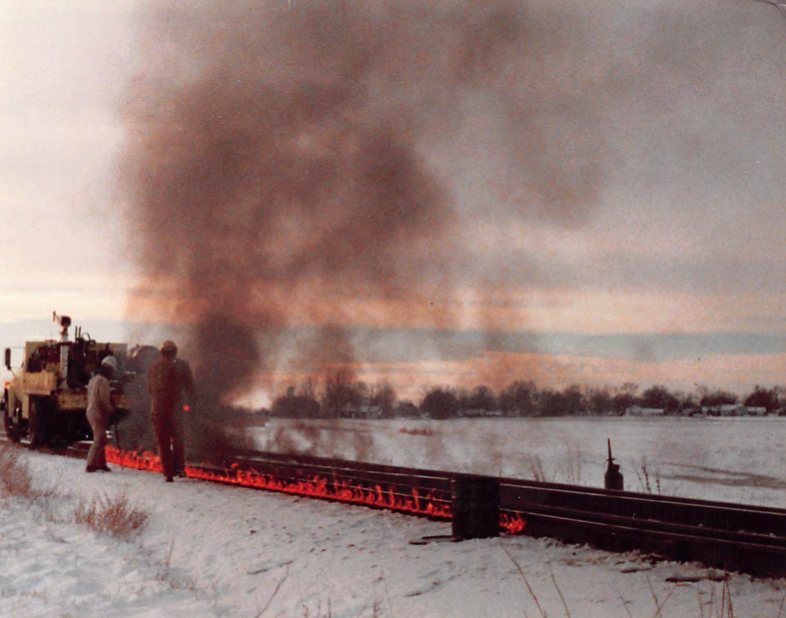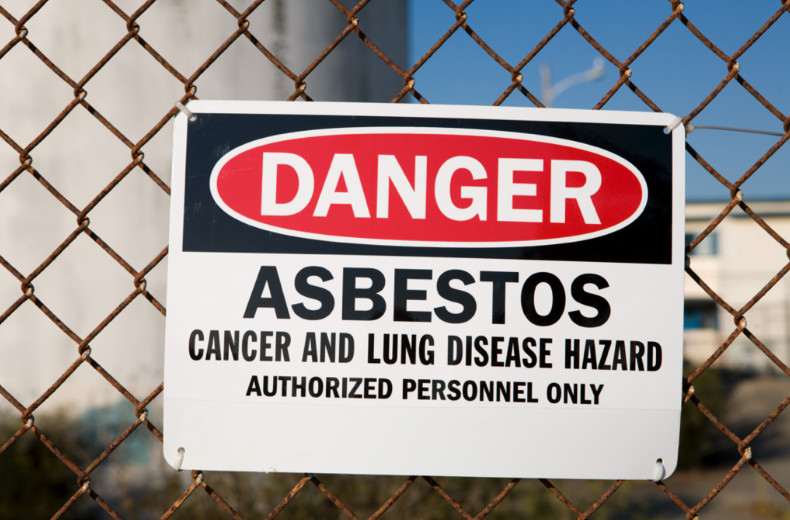As context, around the mid-1980’s, Class I railroads like NS were being named in hundreds of lawsuits brought by current and former railroad workers diagnosed with mesothelioma and lung cancer caused by asbestos exposures. Because of the costs associated with this litigation, the railroads were financially motivated to identify where the asbestos was on their systems.
Asbestos In Railcars, Locomotives and Shops
Among hundreds of line items, Norfolk Southern’s asbestos inventory states that as of 1984, it held the following asbestos containing parts:
- 4,473 asbestos-containing brakes shoes
- 28,035 asbestos-containing gaskets,
- 263 asbestos-containing seals,
- 250 ft of asbestos-containing steam pipe
Norfolk Southern’s 1984 asbestos inventory also lists undisclosed quantities of:
- Asbestos-containing brake liners, brakes grids and brake bands,
- Asbestos-containing clutch gears, clutch assemblies, clutch plates, and clutch gears,
- Asbestos-containing pipe thread sealant, and other miscellaneous locomotive and rail car parts.
The railroad employees who performed hands-on work with these parts endured the most significant asbestos exposures. Railroad shop workers and car department employees were tasked with tearing out old asbestos-containing parts and then shaping, grinding, cutting, and installing the new asbestos-containing parts. During this process, friable asbestos would become airborne and would be inhaled or ingested by the railroad workers. Once airborne, asbestos fibers can hang in the air for days. Railroad workers were frequently made to perform this work in improperly ventilated shops without access to respirators or other basic protective equipment. As a result, those who worked in or near railroad locomotive and car shops would have suffered some degree of asbestos exposure. Even short term exposures to asbestos fibers can lead to mesothelioma, lung cancer, laryngeal cancer and pulmonary fibrosis.
Railroad Welders and Asbestos
Railroad workers performing welding duties were provided with asbestos-containing gloves, coats and spats. These items were also inventoried in Norfolk Southern’s 1984 asbestos list. Car department workers have described using asbestos sheeting as a heat shield behind welds. These railroad welders often cut the asbestos sheets based on where they were working, causing the asbestos fibers to become respirable.

Railroad Track Department Workers and Asbestos
Norfolk Southern’s 1984 asbestos inventory lists asbestos rope as well. As depicted in the photo above, anyone who worked in the track department can likely recall the process of heating rail whereby trackmen would soak asbestos rope in diesel fuel, lay the rope near the rail and light it on fire. Because it would degrade, trackmen could only use the asbestos rope a few times. When they needed new rope, they would go back to the shop and cut a piece of asbestos rope off the roll. The burning and cutting of this asbestos rope exposed trackmen to friable asbestos.
Need Our Help? Contact Us Today!
Railroad Buildings Were Made Of Asbestos
The 1984 railroad asbestos inventory shows that NS made heavy use of asbestos-based products in the construction and maintenance of their various facilities. NS had the following asbestos-containing building materials in storage:
- 211 gallons of roof cement
- 205 gallons of roof sealant
- 830 gallons of floor coating
- 286 lbs of HVAC duct sealant
- 180 sq ft of perforated ceiling tile
NS also had undisclosed quantities of asbestos-containing:
- roof shingles,
- floorboards,
- floor tile,
- tile cement,
- millboard,
- hardboard,
- wall panels,
- sheets of asbestos,
- canvas,
- cloth, and
- a variety of asbestos insulation materials.
Over the years, we have represented a number of Bridges and Buildings (B&B) workers. Those clients have described their work with all of these asbestos-containing building products. B&B workers were also often tasked with demolition of railroad buildings, which exposed them to friable asbestos. As these asbestos building products deteriorate, asbestos fibers break off and become airborne. Consequently, even a railroad employee working in an office could have been exposed to dangerous amounts of asbestos.
The scale and variety of asbestos products that Norfolk Southern had in storage in 1984 was immense. While asbestos began to be phased out in the mid-1980s, decades of heavy asbestos use did not disappear overnight. The railroads often chose to let existing asbestos parts wear out before they were replaced, prolonging the danger. Asbestos can still be found in aging locomotives, railcars and buildings to this day. As a result, even today’s railroad workers are at risk for asbestos exposure.
Why Were Railroads Reliant on Asbestos?
Asbestos has been used extensively throughout the railroad industry because it is an excellent insulator; because it is durable; because it is flexible; and above all, because it is cheap. However, asbestos is also extremely hazardous.

When Was Asbestos Identified as a Hazard?
The toxicity of asbestos was first discovered and documented well over a century ago. By 1937, asbestos had been formally identified as a toxin by the Association of American Railroads. By 1958, the railroads knew that asbestos causes cancer. By 1960, it was medically accepted that asbestos causes mesothelioma. However, by this point, the railroads were heavily reliant on asbestos and were extremely resistant to using more expensive alternatives. The railroads chose to prioritize profit over the health of railroad workers. As a result, railroad employees endured occupational exposures to asbestos decades after asbestos was identified as a carcinogen. To make matters worse, the railroads often failed to take even the most basic precautions to protect their employees from asbestos exposure. It wasn’t until the mid-1980s that the industry finally began to phase out the use of asbestos.
At Hughes Law Offices, we take a full survey of the workplace in determining which toxins, including asbestos, diesel exhaust, creosote, welding fumes, silica sand, benzene-containing solvents and degreasers, herbicides, and secondhand smoke, contributed to causing our client’s illness. If you suspect that your illness or that of a loved one could be related to workplace exposures, contact Hughes Law Offices today for a free attorney consultation.

